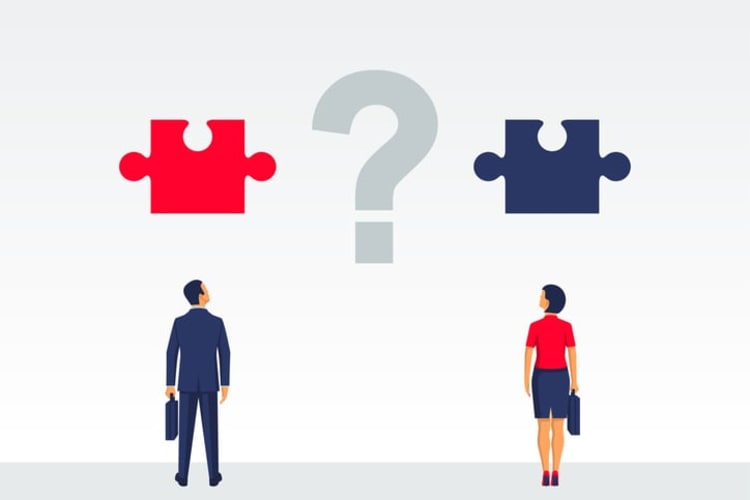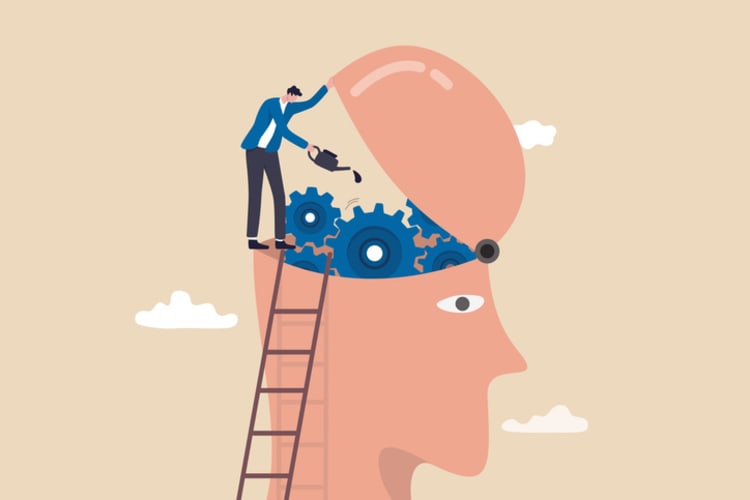In today’s fast-paced world, being able to make effective decisions is more crucial than ever. With an abundance of information at our fingertips and countless choices to make daily, mastering the art of decision-making can significantly impact our personal and professional lives. So, how can we navigate through complex situations and make informed choices that lead to success? This comprehensive guide unveils the secrets behind crafting the perfect decision-making process in 2024, equipping you with essential skills and proven techniques to become a confident and effective decision-maker.
Key takeaways
- Decision-making is a crucial factor for success and well-being, involving critical thinking, emotional intelligence, and adaptability.
- Common decision making challenges include analysis paralysis, confirmation bias and decision fatigue. They can be overcome through recognizing them and employing strategies to manage them.
- Enhancing decision making skills requires practice in low stakes situations as well as seeking feedback from others while utilizing tools such as SWOT analysis or pro con lists to make informed choices.
The essence of decision making

Decision-making plays a vital role in our lives, as it involves evaluating options and selecting the most advantageous course of action among possible solutions. At the core of the decision-making process are the values, preferences, and beliefs of decision makers.
Whether it’s deciding on a career path or choosing a business strategy, the ability to make rational and informed decisions can significantly impact our success and well-being. This makes honing our decision-making skills imperative, as it enables us to navigate through complex situations and identify the best alternatives.
Personal decision making
From deciding what to wear in the morning to selecting a life partner, personal decision making encompasses a wide range of everyday choices and long-term decisions that affect our lives. Our ability to make informed decisions evolves as we mature, with research suggesting that adolescents’ decision-making abilities differ from adults due to the immaturity of their psychosocial capacities, such as impulse control and emotion regulation.
Improving our decision-making skills equips us to handle life’s challenges more effectively and make choices that result in a fulfilling and successful life.
Business decision making
In the business world, effective decision making is paramount to achieving organizational goals and objectives. Business decision making requires considering multiple factors, such as company goals, resources, and stakeholder interests, in order to make informed choices. Utilizing decision-making models, such as the rational decision making model, intuitive decision making model, and participatory models, can guide individuals and organizations in crafting well-informed and effective decisions that contribute to their success.
A refinement in our decision-making skills allows us to navigate the complexities of the business landscape more effectively, leading to choices that drive our organizations forward.
Key decision-making skills for success

In order to excel in decision-making, it is crucial to develop key skills that contribute to effective problem-solving and informed choices. Critical thinking, emotional intelligence, and adaptability are essential skills that can greatly impact the decision-making process.
These skills not only enable us to analyze information and evaluate evidence, but also help us understand and manage our emotions, adjust our approach based on changing circumstances, and make well-rounded decisions. Let’s delve deeper into each of these skills and understand their significance in the decision-making process.
Critical thinking
Critical thinking is the ability to objectively analyze facts, evaluate data, and form an opinion based on logical reasoning and evidence. It involves inquiring, analyzing, and interpreting information to make informed decisions.
Enhancing our critical thinking skills paves the way for improved decision making, more efficient problem resolution, and creative thinking. Employing decision-making tools such as SWOT analysis, decision matrices, and pro-con lists can further assist in developing our critical thinking abilities and making more informed decisions.
Emotional intelligence
Emotional intelligence is the capacity to comprehend and regulate one’s own emotions, as well as the emotions of others. It plays a significant role in decision-making, as it helps us recognize potential risks and benefits associated with a decision, and make choices that are more likely to result in desired outcomes.
Nurturing our emotional intelligence enhances our ability to handle complex situations, comprehend the impact of our decisions on others, and align our choices with our values and goals.
Adaptability
Adaptability is the ability to adjust to varying circumstances and think and act with flexibility to address distinct situations. In the ever-changing landscape of personal and professional life, adaptability is a crucial skill that enables us to respond promptly and proficiently to shifting conditions.
Embracing adaptability empowers us to explore different alternatives, learn from our mistakes, and make informed decisions amidst uncertainty and change.
Overcoming common decision-making challenges

While the decision-making process is essential for success, it is not without its challenges. Common obstacles, such as analysis paralysis, confirmation bias, and decision fatigue, can hinder effective decision-making and lead to suboptimal choices.
Understanding these challenges and adopting strategies to overcome them, enhances our decision-making abilities, leading to more informed and rational decisions. Let’s explore these common challenges and the ways to overcome them.
Analysis paralysis
Analysis paralysis occurs when we become overwhelmed by the abundance of incoming data or our inclination to overanalyze a situation, leading to indecision. This can hinder our ability to make informed decisions and may result in missed opportunities or suboptimal choices.
To overcome analysis paralysis, it is crucial to set clear goals, prioritize information, and focus on making progress rather than striving for perfection.
Confirmation bias
Confirmation bias is the tendency to prefer information that corroborates our pre-existing beliefs, leading to biased decisions. This cognitive bias can result in erroneous decision-making by causing us to interpret or prefer information that supports our prior beliefs while disregarding or devaluing information that contradicts them.
To counter confirmation bias, it is essential to be aware of our own biases, seek information from multiple sources, and consider alternative perspectives.
Decision fatigue
Decision fatigue refers to the diminishing quality of decisions made by an individual after an extended period of decision-making. This phenomenon can lead to impulsive or illogical decision-making, as well as decision avoidance, resulting in suboptimal choices.
To effectively manage decision fatigue, strategies such as taking breaks, delegating decisions, and setting limits on the number of decisions to be made can be implemented.
A comprehensive 7-step decision-making process

To navigate the complexities of decision-making, a comprehensive seven step decision-making process can be employed. This structured approach involves:
- Defining the problem
- Gathering information
- Generating alternatives
- Evaluating options
- Making a choice
- Implementing the decision
- Reviewing and adjusting as necessary.
Adhering to this systematic process facilitates more informed and effective decisions, contributing to success in both personal and professional spheres. Let’s dive deeper into each of these steps and understand their significance in the decision-making process.
Define the problem
Defining the problem is the first step in the decision-making process and is crucial to ensure that the correct issue is being addressed. By clearly identifying the problem, we can elucidate the objective, determine the primary cause, and direct the decision-making process.
A well-defined problem guarantees that we focus on the actual issue at hand and facilitates the creation of efficient solutions.
Gather information
Once the problem is defined, the next step is to gather information from various sources to better understand the problem and potential solutions. Sources of information may include:
- Historical data
- Market research
- The expertise of consultants
- The insights of colleagues with applicable experience
The collection of relevant information enables us to identify various alternatives to the problem and make more informed decisions.
Generate alternatives
Generating alternatives is essential for a comprehensive and informed decision-making process. By examining alternatives, we are able to take into account various perspectives and reduce potential biases. Having alternatives provides a contingency plan should the initial choice not yield the desired outcome.
Brainstorming, researching, and evaluating potential solutions are crucial steps in generating alternatives.
Evaluate options

Evaluating options is a critical step in the decision-making process, as it involves considering factors such as:
- Feasibility
- Risks
- Implications
- Ethical impact
- Personal and organizational values
By evaluating options, we can resist the temptation of rash decisions and augment the probability of achieving the desired results.
Utilizing decision-making tools such as pro-con lists, SWOT analysis, and decision matrices can further assist in evaluating options and making informed choices.
Make a choice
After evaluating options, the next step is to make a choice based on the assessment and select the best solution. This involves taking into account all the information collected and the potential impact on each stakeholder.
A well-informed choice augments the probability of achieving the desired outcome and reduces the risks associated with the decision.
Implement the decision
Once a choice has been made, it is time to implement the decision through project management by:
- Creating a plan
- Allocating resources
- Setting deadlines
- Ensuring that everyone involved is on the same page.
Implementing the decision effectively ensures that the desired outcome is achieved and that the decision-making process results in a positive impact on the organization or individual.
Review and adjust
The final step in the decision-making process is to arrive at the final decision, review and adjust it as necessary, considering its impact and effectiveness. This involves assessing the outcomes, analyzing the feedback, and making any adjustments needed to ensure the decision produces the desired results.
Continuous review and adjustment of our decisions facilitate the enhancement of our decision-making skills and the making of improved choices in the future.
Enhancing decision-making skills

To further enhance our decision-making skills, it is important to practice in low-stakes situations, seek feedback, and learn from past decisions. These strategies not only help us gain experience and confidence in our decision-making abilities, but also enable us to identify areas for improvement and refine our decision-making processes.
Let’s explore each of these strategies in more detail.
Practice in low-stakes situations
Practicing decision-making in low-stakes situations allows us to explore, make mistakes, and learn from them without incurring significant consequences. Examples of low-stakes situations include playing board games, taking online quizzes, or participating in mock interviews.
Participation in these activities sharpens our decision-making skills, builds confidence, and enhances our ability to make well-informed decisions in high-stakes situations.
Seek feedback
Seeking feedback from others is crucial in gaining new perspectives and improving our decision-making abilities. By soliciting feedback, we can identify areas for improvement, validate our ideas, and make more informed decisions.
When seeking feedback, it is important to remain open-minded, be explicit about the purpose of the feedback, and offer clear instructions on how to provide it.
Learn from past decisions
Learning from past decisions is an essential aspect of enhancing our decision-making skills. Reflecting on successes and failures allows us to identify areas for improvement, recognize patterns in our decision-making processes, and devise plans to enhance them.
Analysis of our past decisions and comprehension of the outcomes help us avoid repeating errors, refine our problem-solving abilities, and enhance our chances of success.
Decision-making tools and techniques

To further aid in the decision-making process, various tools and techniques can be employed to evaluate options and make informed choices. These tools, such as SWOT analysis, decision matrix, and pro-con lists, enable us to systematically assess potential options and make well-rounded decisions.
Let’s examine each of these tools and techniques and understand their significance in the decision-making process.
SWOT analysis
SWOT analysis is a strategic planning tool used to evaluate the strengths, weaknesses, opportunities, and threats associated with a particular decision. By identifying these internal and external factors, we can gain a comprehensive understanding of the situation and make more informed decisions.
SWOT analysis helps us recognize potential risks and opportunities and develop strategies to address them, ultimately leading to more effective decision-making.
Decision matrix
A decision matrix is a tool used to compare and prioritize options based on specific criteria, such as:
- cost
- time
- risk
- impact
By assigning a numerical value to each option and comparing these values, we can determine the most suitable option for the given situation.
Utilizing a decision matrix enables us to make more informed decisions by systematically evaluating the pros and cons of each option.
Pro-con lists
Pro-con lists are a simple yet effective tool used to assess multiple alternatives and reach a conclusion by listing the advantages and disadvantages of each option. Weighing the pros and cons provides us with a better understanding of potential outcomes and aids in making more informed decisions.
Pro-con lists can be particularly helpful in situations where a quick decision needs to be made or when multiple options have similar benefits.
Summary
In conclusion, mastering the art of decision-making is crucial in navigating the complexities of our personal and professional lives. By understanding the essence of decision-making, developing key skills such as critical thinking, emotional intelligence, and adaptability, and employing effective tools and techniques, we can make more informed and rational decisions that lead to success. With continuous practice, reflection, and learning from past experiences, we can enhance our decision-making abilities and confidently tackle the challenges that lie ahead.
Frequently asked questions
The seven steps of the decision-making process are defining the problem, gathering information, identifying alternatives, evaluating alternatives, selecting the best alternative, implementing the chosen alternative and monitoring the progress.
Defining the problem involves understanding the issue and the context in which it exists. Gathering information involves researching the problem and gathering data to help inform the decision. Identifying alternatives involves brainstorming potential solutions to the problem. Evaluating alternatives involves assessing the pros and cons of each potential alternative.
Decision-making can be categorized into three types: strategic, tactical and operational.
Strategic decisions involve setting the direction of the organization, tactical decisions involve how this direction is achieved, while operational decisions involve daily tasks to run the organization.
Rational decision-making models involve logically evaluating options and making choices based on evidence, whereas intuitive models rely on instinct and gut feelings.
Practicing in low-stakes situations, seeking feedback, and learning from past decisions can help enhance our decision-making skills.
Gathering information is essential in the decision-making process, as it provides the necessary insight into various options available and helps make well-informed decisions.
By breaking up the text into paragraphs, it becomes easier to read and understand. It also allows the reader to focus on one idea at a time, rather than trying to process multiple ideas at once.
Problem-solving involves the examination of available data and the identification of potential solutions, while decision-making requires the assessment of options and the selection of the most advantageous course of action.
Emotional intelligence assists in recognizing potential risks and benefits associated with a decision, and helps make decisions that are more likely to result in desired outcomes.
Common challenges include analysis paralysis, confirmation bias, and decision fatigue. These can be overcome by setting clear goals, prioritizing information, seeking feedback from multiple sources, and implementing strategies to manage decision fatigue.
Practicing in low-stakes situations allows individuals to explore, make mistakes, and learn from them without incurring significant consequences, thereby honing decision-making skills and building confidence.
SWOT analysis, decision matrix, and pro-con lists are examples of decision-making tools and techniques that can help evaluate options and make informed choices.





